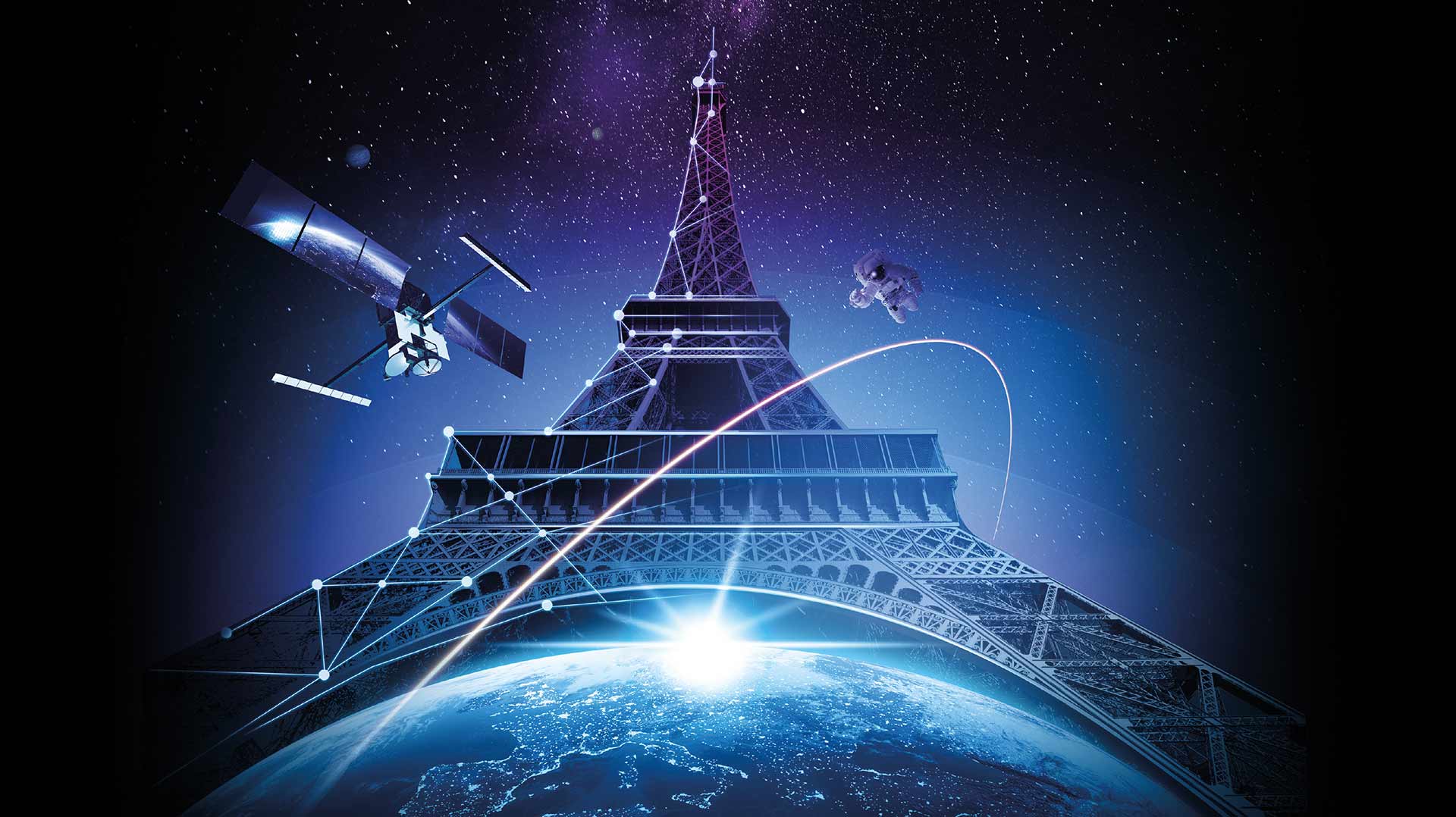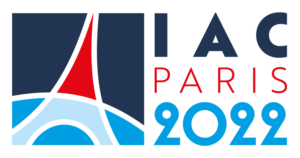
IAC 2022
March 2, 2022
International Astronautical Congress 2022
73rd International Astronautical Congress
18 – 22 September 2022, Paris, France
 The IAF General Assembly selected Paris, France as Host City for IAC 2021 on Friday 5 October. The Hosting Organization is the Centre National d’Études Spatiales (CNES), a member of IAF since 1981. Paris hosted the first IAC ever in 1950, then in 1963 and lastly in 1982 and now will be holding the record of the city with most IACs hosted. Following the growing escalation of the Covid-19 outbreak around the world, the IAF has been forced to re-assess the overall schedule of IACs. On Wednesday 3 June 2020, an extraordinary session of the Bureau of the International Astronautical Federation (IAF) was chaired by Pascale Ehrenfreund, IAF President. The Bureau reviewed the calendar of the forthcoming editions of the International Astronautical Congress (IAC) in light of the consequences of the COVID-19 pandemic and the resulting lockdown. Paris, France will now host the IAC on 18 – 22 September 2022.
The IAF General Assembly selected Paris, France as Host City for IAC 2021 on Friday 5 October. The Hosting Organization is the Centre National d’Études Spatiales (CNES), a member of IAF since 1981. Paris hosted the first IAC ever in 1950, then in 1963 and lastly in 1982 and now will be holding the record of the city with most IACs hosted. Following the growing escalation of the Covid-19 outbreak around the world, the IAF has been forced to re-assess the overall schedule of IACs. On Wednesday 3 June 2020, an extraordinary session of the Bureau of the International Astronautical Federation (IAF) was chaired by Pascale Ehrenfreund, IAF President. The Bureau reviewed the calendar of the forthcoming editions of the International Astronautical Congress (IAC) in light of the consequences of the COVID-19 pandemic and the resulting lockdown. Paris, France will now host the IAC on 18 – 22 September 2022.
The IAC 2022 theme will be Space for @ll to reach beyond the space community and bringing together all communities to offer great opportunities for networking and forging new contacts and potential partnerships. Exceptionally, the IAC 2022 will be from Sunday till Thursday.
Nexus Aurora at IAC 2022
Nexus Aurora will have four presenters delivering five talks this year.
Mission architecture for Robotic, Low-Cost, High-Fidelity Mapping of Mission Areas – MDRS SSAM Team
Informed mission planning is a crucial step for successful manned missions both in space and on other bodies. Precursor missions have frequently been used as both technological testbeds and implementers of prerequisite infrastructure to support future missions as part of an incremental space exploration strategy. While Mars presents a new opportunity for human exploration and long-term missions, it also presents new logistical challenges in mission planning and execution. This is due to environmental, communications, and resource availability challenges not experienced with manned missions within the Earth system. Consequently, missions designed for exploration and scouting of areas of interest before the arrival of humans become a necessity.
This paper presents a vehicle design and mission architecture for a rapid, cost-efficient, and redundant scout system for high-fidelity mapping and exploration of mission areas. A swarm robotics approach utilizing highly-modular, simplified rover platforms and existing commercially available equipment are able to autonomously build 3D maps of large swaths of terrain that include information on topology, mineral concentrations, ambient conditions, and additional data pertinent to mission planning and in-situ resource utilization. Standardized buses with plug-and-play payload racks allow for use of variable payloads to suit mission needs without changes to overall design or logistics. This modular, redundant design represents a considerably valuable mechanism for increasing cost-efficiency and chance of mission-success of interplanetary operations from early-planning to end of mission life.
Vehicle Design and Mission Architecture for an Exploration Excursion Vehicle for Deimos and Phobos – Aithos Design Team
The Martian moons Deimos and Phobos present a unique resource within the Mars system as a testing ground for exploration technology, as well as being a potential hub for interplanetary missions, in-situ resource utilization, and as sources of valuable insight into the formation of the solar system. Their low gravity and ease of access from a standard interplanetary transfer make them desirable staging grounds for an incremental approach to the exploration of the Martian system. The possible presence of ice and valuable minerals beneath the surface of these moons opens the door for in-situ resource utilization to expand the range of operations of future missions. Spacecraft designed for sustainable interplanetary missions are commonly dedicated crew transit vehicles, with dedicated landing and exploration craft being delivered to the system in advance. This approach calls for a new, versatile mission and spacecraft design that is able to carry out multiple mission profiles including rendezvous and transfer procedures, in-system transit between mission destinations, and the delivery of scientific instruments to and from those destinations.
This work delivers a dedicated Exploration Excursion Vehicle design and mission architecture for the exploration of both Deimos and Phobos in a single sortie from a crew transit vehicle, including surface sample return. The mission profile includes all stages of development and deployment from design and launch to post-mission operations. Vehicle system and subsystem analyses are requirement driven and presented in detail, taking into account technical, social, political, and economic constraints across the mission structure. Novel technologies and applications are presented to overcome the unique challenges of a multiple-landing-and-takeoff capable vehicle and for delivery of the mission vehicle approximately two years prior to crew arrival. The mission architecture is designed for a maximum 30-day sortie from the time of crew arrival, including check-out and decommissioning operations, and relies minimally on unproven or undeveloped technology to allow for deployment within 20 years for under $1 billion USD.
Development of an Open Source Modelling Package for Thermal Balance of Crewed Mars Habitats – Sam Ross
Thermal control of crewed spacecraft and long-duration surface habitats is an essential function for maintaining habitability and crew function, and demands attention at all stages of the development process for mission architectures. The thermal environment on the surface of Mars is particularly challenging, as it includes both a substantial element of convective losses and extreme temperature ranges. This environment makes high-level assessments of thermal balance difficult, and requires intensive numerical analysis to comprehensively analyse.
This work presents a new open-source software tool intermediate between these roles, utilising semi-empirical formulae to quickly determine thermal balance for many configurations of habitat-scale structure. Modelled heat flows include insolation, radiative heat loss to atmosphere and terrain, convection with atmosphere and conduction to regolith. The software provides a wide range of options for both the architecture of the analysed habitat and external environmental conditions. Output data from this tool are validated against numerical analysis for a range of existing and speculative designs for Mars habitats, with results in both methods agreeing closely. This is a powerful tool for preliminary system-level analyses of thermal balance of Mars habitats, allowing a broader study of different architectures and substantially faster design iteration.
Comprehensive High-level Avionics Systems for Exploration – Nathaniel H.
With a growing demand for cheaper access to space, a new type of avionics system is needed that bridges the gap between larger fault-tolerant systems and smaller systems designed for cubesats. The Comprehensive High-level Avionics Systems for Exploration (CHASE) fulfills this need with an open-source solution that provides high-reliability avionics in an inexpensive package.
The CHASE hardware provides radiation tolerance through hardware redundancy, a feature lacking in currently available cost-effective cubesat systems. The hardware provides power management systems, fault-tolerant processing systems, a high-performance Inertial Measurement Unit (IMU), and a versatile software-defined radio. CHASE provides multiple SpaceWire and programmable digital IO ports.
The CHASE project includes the development of a comprehensive set of flexible software libraries for common systems. These will allow a faster development process and standardization between spacecraft. CHASE provides a versatile platform on which to build a variety of spacecraft, and its open-source nature allows it to be easily expanded for more complex missions.
Methods for simulating crowd movements in low gravity environments for safe emergency egress design – Szymek (Simon) Matkowski
With the advent of multiple colonization programs, located off earth and in low gravity environments, there is a need to focus on safety procedures and standards in the habitable spaces.
As living hubs and habitable spaces get larger the complexity of layout and necessary systems becomes greater. Contemporary knowledge shows the more people in an environment without fully prescribed behavior, the higher the required complexity of the habitat and the more redundant safety systems there must be. Emergency systems for egress of 10 people significantly differ from those for 50 people.
Safety of the people is a top technical priority in every enclosed habitat under any environmental conditions. It follows therefore, the design of a base, colony or even a city in orbit or on a planetary surface complies with this principle.
Each space related project of habitable volume must assume different scenarios for people’s behavior during emergency situations. The base must provide as much failsafe shelter as possible which can be used under panic or failure of training situations.
Functional, structural, engineering and construction method solutions as well as adequate procedures must provide efficient emergency egress sufficient for the number of people able to be in a space at any one time.
This evacuation process is one of the key elements in saving human lives in emergency situations within hostile environments.
The evacuation processes are based on the mechanics of locomotion of those involved. The reduced gravity inherent to these situations significantly influences single human movement as well as crowd formation and flow. Although the locomotion of individual humans is well studied in different gravitational conditions, the crowd formation and influence on safety design does not appear to have been focused on within that research.
Human movement mechanics in low gravity environments is different enough to state that crowd behavior will not follow predictions made in standard gravity conditions. This indicates that mistakes in planning may result in casualties and injuries.
This paper covers high-level methods and major guidelines for preparing data for evacuation processes in low gravity environments. The purpose is to formulate guidelines for evacuation strategy and reiterated design policies in low gravity environments.
The methods used to obtain the highest standards in safety design are multi-iterated software simulations of crowd movements with constant upgrade of assumed solutions. These methods can be used to help in the design and maintenance of construction methodology and quality.
